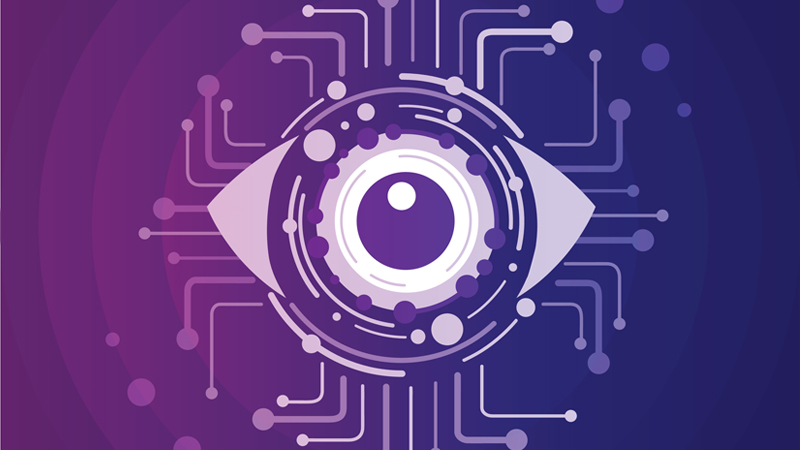The Role of Computer Vision in Autonomous Vehicles

Computer vision plays a pivotal role in the development and operation of autonomous vehicles, revolutionizing transportation systems. At its core, computer vision enables vehicles to perceive and understand their environment by processing visual data from onboard cameras and sensors. By leveraging advanced algorithms and machine learning techniques, autonomous vehicles can interpret road signs, detect obstacles, and navigate complex scenarios in real time. This technology enhances safety, efficiency, and convenience on the roads, paving the way for a future where vehicles can autonomously navigate without human intervention. Understanding the significance of computer vision is essential for realizing the full potential of autonomous driving technology.
Applications of Computer Vision in Autonomous Vehicles
Here are some key areas where computer vision is used in autonomous vehicles:
-
Object Detection and Recognition
One of the most important tasks for an autonomous vehicle is to detect and recognize objects in its surroundings, such as pedestrians, other vehicles, and obstacles. Computer vision algorithms can identify and track these objects, allowing vehicles to decide based on their movements and behavior.
Example: An autonomous vehicle using computer vision to detect and recognize pedestrians at a crosswalk and adjust its speed accordingly to avoid a collision.
-
Lane Detection and Tracking
Another key task for an autonomous vehicle is to maintain its position within a lane and safely navigate through traffic. Computer vision can detect and track lane markings and provide feedback to the vehicle’s control system to maintain its trajectory.
Example: a self-driving vehicle that detects and tracks lane markings and adjusts its steering to avoid collisions.
-
Traffic Sign Recognition
Autonomous vehicles must be able to read and interpret traffic signs, such as speed limits, stop signs, and yield signs. Computer vision algorithms can recognize these signs and provide feedback to the vehicle’s control system.
Example: An autonomous vehicle using computer vision to recognize a stop sign at an intersection and come to a safe and controlled stop.
-
3D Mapping and Localization
Autonomous vehicles need a 3D map and accurate position and orientation estimates to navigate complex environments. Computer vision can create these maps and localize the vehicles within them.
Example: An autonomous vehicle using computer vision to create a 3D map of a parking garage and accurately navigate to a specific parking spot.
-
Pedestrian and Cyclist Detection
In addition to detecting and recognizing other vehicles, autonomous vehicles must also be able to detect and track pedestrians and cyclists. Computer vision algorithms can be used to identify these objects and predict their movements, allowing the vehicle to navigate through urban environments safely.
Example: An autonomous vehicle using computer vision detects and tracks a cyclist in a bike lane and adjusts its speed and trajectory to avoid a collision.
Benefits of Computer Vision in Autonomous Vehicles
-
Increased Safety
Autonomous cars with computer vision solutions can reduce accidents caused by human mistakes by sensing and making judgments based on real-time information.
Example: An autonomous vehicle equipped with computer vision can detect a pedestrian crossing the street and automatically coming to a stop, preventing a potential collision.
-
Improved Efficiency
Computer vision can also improve the efficiency of autonomous vehicles by optimizing their route and reducing fuel consumption.
Example: An autonomous delivery vehicle equipped with computer vision can identify the most efficient route to deliver packages, reducing travel time and fuel consumption.
-
Enhanced Accessibility
Autonomous vehicles equipped with computer vision can provide a safe and accessible transportation option for individuals with disabilities or mobility impairments.
Example: An autonomous vehicle equipped with computer vision can transport a passenger with a disability to their destination safely and efficiently.
Challenges of Computer Vision in Autonomous Vehicles
-
Limited Performance in Adverse Weather
Inclement weather can reduce visibility and lead to inaccurate readings, preventing computer vision algorithms from operating at their best.
Example: An autonomous vehicle with computer vision may have difficulty detecting lane markings or other vehicles in heavy rain or fog.
-
Vulnerability to Cyber Attacks
Computer vision systems in autonomous vehicles may be vulnerable to cyber-attacks, compromising functionality and threatening passengers and other road users.
Example: A cyber-attack on an autonomous vehicle’s computer vision system could result in the vehicle failing to detect an obstacle in its path, causing a potential collision.
-
Legal and Regulatory Challenges
Developing and deploying autonomous vehicles equipped with computer vision raises complex legal and regulatory challenges, including liability, data privacy, and ethical considerations.
Example: The development of autonomous vehicles equipped with computer vision may require new legislation and regulatory frameworks to address liability and data privacy issues.
Conclusion
Computer vision is essential to accurately perceive their surroundings and make decisions in real time. Computer vision offers many benefits for autonomous vehicles, including increased safety, efficiency, and accessibility. However, computer vision also presents several challenges, including limited performance in adverse weather, vulnerability to cyber-attacks, and legal and regulatory challenges. The most important idea is to ensure that autonomous vehicles are deployed safely and responsibly as they become more prevalent on public roads.









